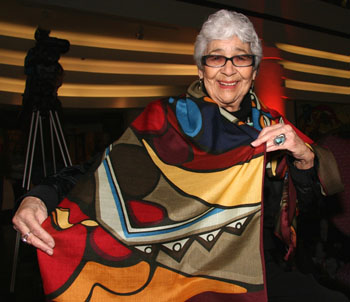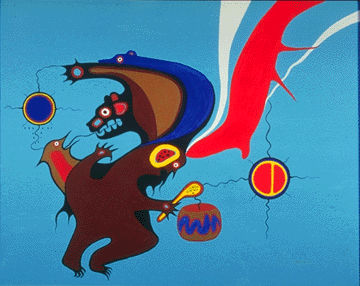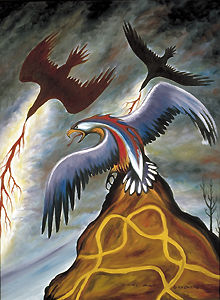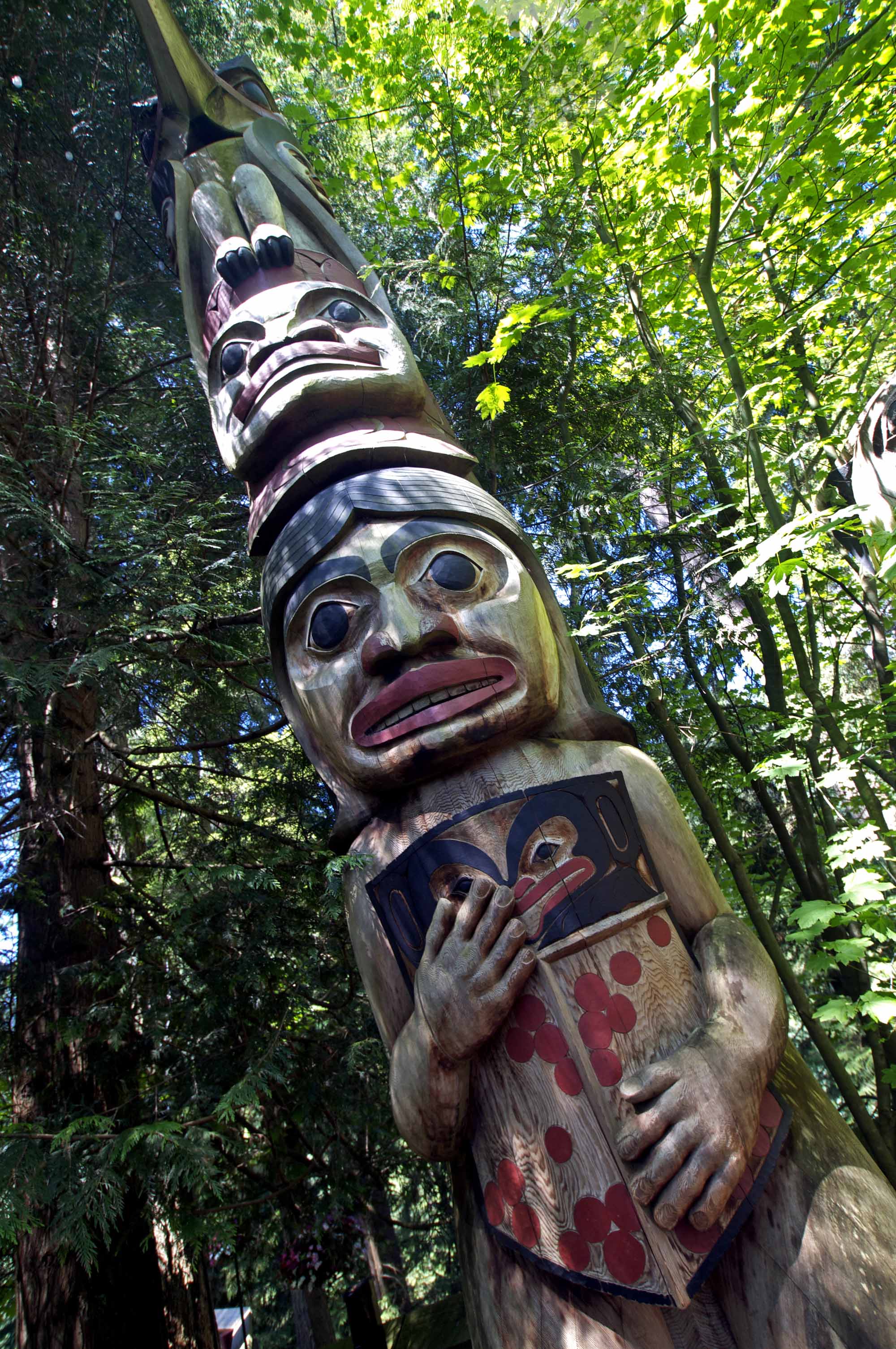The Professional Native Indian Artists Inc. (PNIAI) was one of the first independently organized, self-managed Indigenous artists’ collectives and cultural advocacy groups in Canada. It was established in the early 1970s in Winnipeg, Manitoba. PNIAI consisted of seven independent Indigenous painters, Jackson Beardy, Eddy Cobiness, Alex Janvier, Norval Morrisseau, Daphne Odjig, Carl Ray and Joseph Sanchez.
Though diverse in their painting styles and cultural backgrounds, the founders of PNIAI were united in their determination to advocate for inclusion, recognition, and equal access to art funding. PNIAI has had a formative and enduring influence on the development of contemporary Indigenous art practice, its critical acceptance and public appreciation. PNIAI initiated an era of increasing activism and empowerment for artists and cultural workers of Indigenous ancestry across the country. PNIAI’s efforts paved the way for later arts organizations such as the Society of Canadian Artists of Native Ancestry and the Aboriginal Curatorial Collective. It also helped broaden national awareness of contemporary Indigenous art in Canada.
Beginnings
The group started with a small circle of artists who were dissatisfied and frustrated at the lack of exhibition opportunities for Indigenous art within the contemporary gallery system. Their interests quickly matured into a critique of prevailing assumptions, then common in Canada, about Indigenous peoples and their art. The general attitude in Canada at the time seemed to be that Indigenous art, if it had ever existed, was a thing of the past. Indigenous art was mistakenly seen as consisting primarily of handicrafts and ethnographic artifacts, which had no place in a contemporary fine art gallery but would rather be more appropriately displayed in a natural history museum. (See also History of Indigenous Art in Canada.)
Three original members of Professional Native Indian Artists Inc., Jackson Beardy, Eddy Cobiness and Joseph Sanchez, lived in or near Winnipeg in 1971. They often met informally with Daphne Odjig at her print shop and gallery, Odjig Indian Prints of Canada at 331 Donald Street. Her shop had become a welcoming gathering place for artistic and political discussion. The group talked about their professional and aesthetic aspirations. They compared their experiences as outsiders to the Canadian gallery establishment and discussed their various encounters with institutional barriers. The artists talked about strategies for bringing about change. They decided they would be more effective as a collective than as individuals. To this end they wrote to other Indigenous artists across the country inviting them to join in the struggle for self-determination and professional advancement. Three artists, Alex Janvier from Alberta, and Carl Ray and Norval Morrisseau from Ontario responded and joined the group.
The seven members formalized their association in 1972 as Professional Native Indian Artists Inc. Shortly after, following a number of successful professional group exhibitions of their work, reporter Gary Scherbain dubbed them the Indian Group of Seven in an article in the Winnipeg Free Press. The name stuck.
Aspirations
The Indian Group of Seven had lofty goals. Their incorporation papers of 1973 emphasized the importance of attaining professional accreditation for both the individual artists and the group. They hoped to achieve national and international recognition through public exhibitions at major art centres. The group planned to use part of the money raised by sales of their work to fund mentorship opportunities and other incentives for young or emerging Indigenous artists across Canada. They hoped to establish bursaries, awards, scholarship funds, and other educational programs to assist in the development of amateur Indigenous artists.
PNIAI was aware that national and international art exhibitions, lectures, workshops and conferences on Indigenous art and culture were essential to establishing the kind of cultural shift they were seeking. As a result, the group committed to developing educational activities and facilities for the study of Indigenous art and culture.
Many of these goals proved unattainable. However, the group remained committed to offering moral and financial support to individual artists. PNIAI simultaneously lobbied for Indigenous contemporary art. Their support and advocacy served as a seminal strategic model for Indigenous arts organizations to come.
Achievements and Legacy
The artists of the Indian Group of Seven voiced their concerns about the survival of Indigenous philosophies, aesthetics, and nationhood. They did this at a time when such ideas were not current or supported by the major cultural or political institutions of the day. The group brought the work of contemporary Indigenous artists to the public’s attention using strategies that challenged the restrictive categorizations of the mainstream art world.
Though their progress was limited, PNIAI, which disbanded in 1975, modelled an organizational structure and collective vision that continues to offer support and inspiration to new generations of Indigenous cultural workers.

 Share on Facebook
Share on Facebook Share on X
Share on X Share by Email
Share by Email Share on Google Classroom
Share on Google Classroom
















